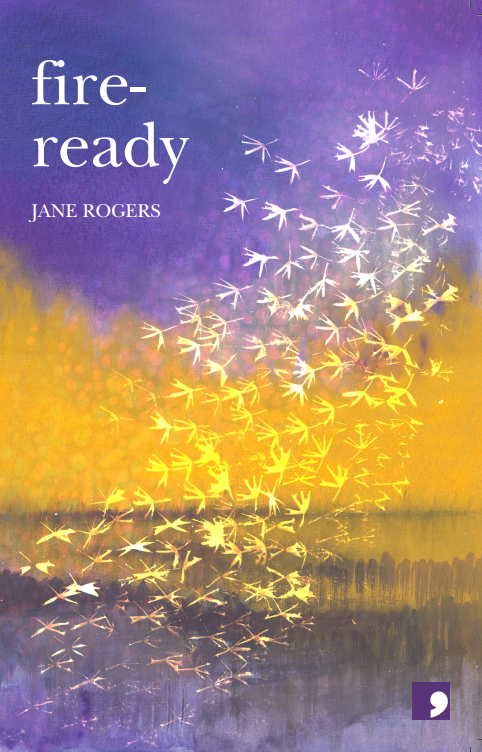
Jane Rogers'
Fire Ready is another excellent short story collection recently published by
Comma Press (read my recent review of Gaia Holmes'
'He Used to Do Dangerous Things' here).
The stories in Fire Ready share some preoccupations with those in He Used to Do Dangerous Things, including climate change, social action and family relationships. Beyond that I'm not intending to compare the two books, they're both equally well worth your time.
Set in Australia, the title story Fire Ready is a moving and increasingly relevant tale of trying to prepare for the coming wildfires, in which Kayla finds adversity bringing her closer to her neoghbours.
Orbiting a future, lifeless earth, Hope shows Hope and her partner discussing whether to let their fellow crew members know that they've noticed signs of life returning to the planet.
The Quick Child is a little contrived but somehow works beautifully. Three characters are separately each surprised by seeing a young boy climbing through a hedge. This shared experience helps the three come closer and rethink their relationship to each other.
In Weeping Beech, Angus (82), who used to work for the council's parks and cemeteries department chains himself to a weeping Beech tree to protest its proposed removal. 'He thinks of all the trees he's planted and looked after. This is the first he's had to bodily defend'. But can he save it?
Primrose follows Rose on her birthday. She starts out annoyed by her husband buying flowers that she's told him she doesn't want and her cat bringing her a dead mouse. However, by the end of the day, an encounter with an enthusiastic young couple has helped her to reassess things and to even see the dead mouse as her cat's attempt to give her a birthday gift.
In The Night Before, Szandra, a reluctant eco-activist lies in bed thinking about the ethical pros and cons of a high profile action against private jets that she's to be involved with the next day. The story raises the question of how far should be go to protest the ecological damage that we see all around us and presents us with an interesting version of the Trolley Problem.
Wilf had cared for his wife Ruth in her final months. Now, in Letting Things Go, he's coping with life after her death and finding himself rediscovering a childlife sense of wonder and sensitivity to the world. 'The image of his grandson, sitting on the blue plastic gym mat, not yelling, but beaming at the world which is all part of himself and has not harmed him, pleases Wilf mightily. One baby is as big as the world: this seems to contain many truths'.
The real stand out story for me is Murmuration. Two spaceships have returned from their explorations, one having been significantly delayed. Their findings, when put together form a portrayal of human hubris and a powerful argument for the need for proper ecological understanding. Anyone who cares about the future of nature can't fail to be moved by this story.
This is an excellent collection of socially engaged fiction, that is readable, moving and entertaining.
Fire Ready by Jane Rogers, published (2024) by Comma Press.
Disclaimer: I was sent a free copy of this book in return for an honest review.























.jpg)










